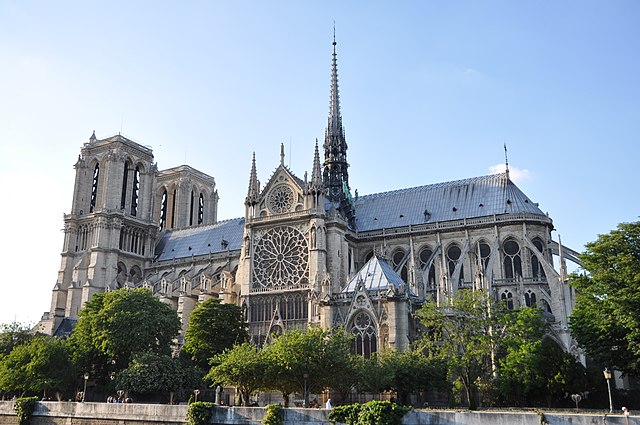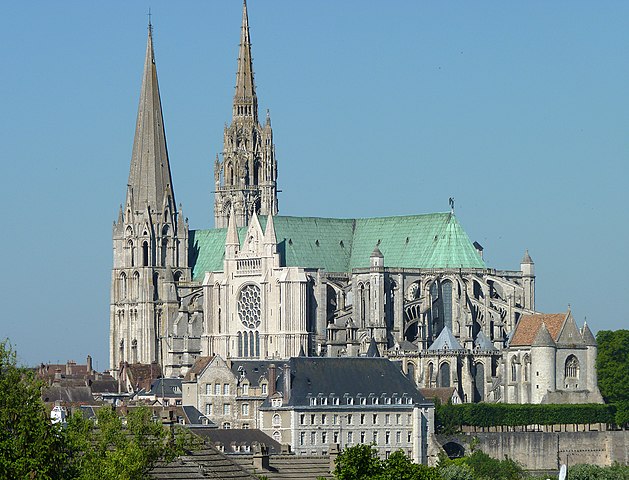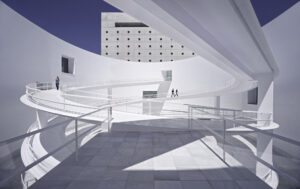Gothic cathedrals are more than just structures; they are frozen poems in stone, evidence of a medieval engineering brilliance that seemed to defy gravity itself. These features include the enormous stone walls, the lofty ribbed vaults, and the intricate tracery of stained glass. However, these wonders are in a condition of constant, slow-motion collapse due to centuries of earthquake activity, weather erosion, and the corrosive bite of contemporary pollutants.
The preservation of these priceless cultural treasures has remained reactive for far too long, waiting for a stone to fall, a crack to form, or, worst of all, a fire to break out. That time is quickly coming to an end. The use of Digital Twin technology, which is turning these historic structures into living, data-streaming organisms and enabling us to predict collapse before it ever starts, is currently causing the most significant change in architectural conservation.
The Digital Twin is a dynamic, virtual representation of a physical structure that is constantly updated by real-world data; it is more than just a 3D model. This provides a real-time pulse of a structure that has endured for more than 800 years, making it the best safety for Gothic cathedrals.

Notre-Dame of Paris South transept rose window
The Contemporary Danger Meets the Medieval Marvel
Gothic architecture’s greatest strength and worst weakness is its structural complexity. Light-filled, lofty interiors are produced by features like the flying buttresses and the pointed rib vaults, which effectively transmit enormous loads down to thin piers. However, because of this clever equilibrium, the structures are extremely susceptible to changes in the outside world.
Gothic giants now face dangers never seen before:
- Climate Change: The century-old masonry joints are under stress due to an increase in the frequency of extreme weather occurrences, such as strong winds and heavy rains.
- Pollution and Acid Rain: The marble and limestone are chemically eroded by pollution and acid rain, which weakens the ornamental carvings and jeopardizes the structural stability.
- Micro-Movements: Tiny, frequently undetectable movements that eventually result in macro-cracks are caused by thermal expansion and contraction, gradual foundation settling, and gradual, long-term material creep.
Conservationists must comprehend the building’s hidden, dynamic forces in addition to seeing it in order to counter these threats, and this is exactly where the Digital Twin comes in.
The Virtual Entity, a millimeter-accurate computer model of the cathedral, is the first and most important stage in constructing a computer Twin. This procedure makes use of a state-of-the-art technological toolkit:
High-Reliability Data Gathering
3D Laser Scanning (LiDAR): To create an accurate point cloud of the entire building, millions of data points are gathered, catching each stone, curvature, and crack.
Photogrammetry and UAV Drones: To give the geometric model fine-grained texture and color mapping, high-resolution photos—often taken with drones—are stitched together.
Ground Penetrating Radar (GPR): Using a non-invasive technique called ground penetrating radar (GPR), one can map internal voids, unseen building phases, and structural irregularities that are not evident to the human eye.

The Framework for HBIM
A Heritage Building Information Modeling (HBIM) framework is created by organizing and refining this raw data. HBIM is a database and much more than a straightforward model. Each component, such as a column, a flying buttress, or a particular vault, has metadata attached to it, such as:
- the kind of stone and the location of its quarry.
- The date of installation, if available from the archives.
- records of past material treatments and repairs.
For any conservation decision, this HBIM serves as the Virtual Twin, offering a comprehensive, historical, and dimensional blueprint. After the 2019 fire, this degree of painstaking digital reconstruction was renowned for protecting the ruins and organizing the renovation of Notre-Dame de Paris.
Real-Time Structural Health Monitoring (SHM)
Structural Health Monitoring (SHM) makes the “Digital Twin” dynamic. Here, the real and virtual worlds combine to form a “Twin Data Center” that runs constantly.
IoT, or the Sensor Network
Hundreds of small, non-invasive Internet of Things (IoT) sensors are placed throughout the foundations, the most strained flying buttresses, and the fragile spires, which are important structural points. These sensors keep an eye on:
- Tiltmeters: Measure minute rotations and shifts in the piers with tiltmeters.
- Extensometers: Monitor the expansion or contraction of preexisting fissures.
- Strain Gauges: Measure the internal tension in the masonry blocks using strain gauges.
- Environmental Sensors: Keep an eye on wind speed, temperature, and humidity, especially on thin features like spires and pinnacles.
The vast, multi-sensor network installed at the Milan Cathedral (Duomo di Milano), one of the biggest Gothic churches in the world, is a perfect illustration. The main spire and the metallic tie-rods are continuously monitored by sensors, which provide a stream of data that is utilized to detect and adjust for environmental and seasonal challenges.

Notre Dame de Paris
Prognosis and Predictive Analytics
The Digital Twin’s capacity to use incoming real-time data to execute simulations on its virtual model is what makes it so brilliant.
The system is capable of responding to important “what if” situations:
- Where will the greatest concentration of stress occur if the temperature decreases by 10 degrees and the wind speed rises by 50 miles per hour?
- What effects will a further 1.5 millimeters of foundation settlement have on the west façade’s structural integrity?
Conservators move from diagnosing damage to prognosticating future damage by integrating this real-time data into Finite Element Analysis (FEA) models within the Twin. Instead of requiring extensive, expensive repair work, anomalies that could take a human engineer months to identify are identified in minutes and can be addressed with proactive, surgical intervention.

Chartres Cathedral
The Emerging Conservation Philosophy: Avoiding Collapse
The shift in perspective toward conservation is the real legacy of the Digital Twin in Gothic architecture. The objective is now to make sure that the structure never breaks in the first place, rather than just fixing what has broken.
This new culture, made possible by technology, has a number of important advantages:
- Cost-Effectiveness: Compared to significant, reactive structural repairs, predictive maintenance is significantly less expensive. A team can stabilize a few stones rather than reconstructing a whole vault section if they spot an issue early.
- Minimal Intervention: Keeping the original structure as intact as possible is the cornerstone of contemporary heritage work. Making decisions based on data guarantees that interventions are modest and properly focused, maintaining the authenticity and integrity of the medieval workmanship.
- Knowledge Preservation: For upcoming generations of architects and historians, the HBIM model acts as an enduring, documented record of the cathedral’s life, construction, and decay history.
There is no denying that the stone poems created by medieval master builders will continue to inspire for generations to come thanks to the combination of traditional architectural principles and the most recent developments in digital technology, such as laser scanning and AI-driven analytics. One piece of information at a time, the future of the past is being written.
For more blogs like this CLICK HRE!!
Reference:
Characterizing the Digital Twin in Structural Mechanics
10 Most Famous Gothic Cathedrals – Artst





